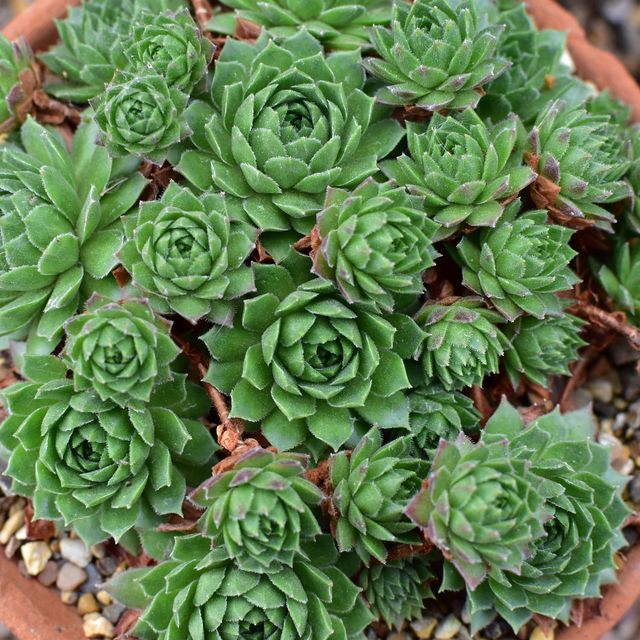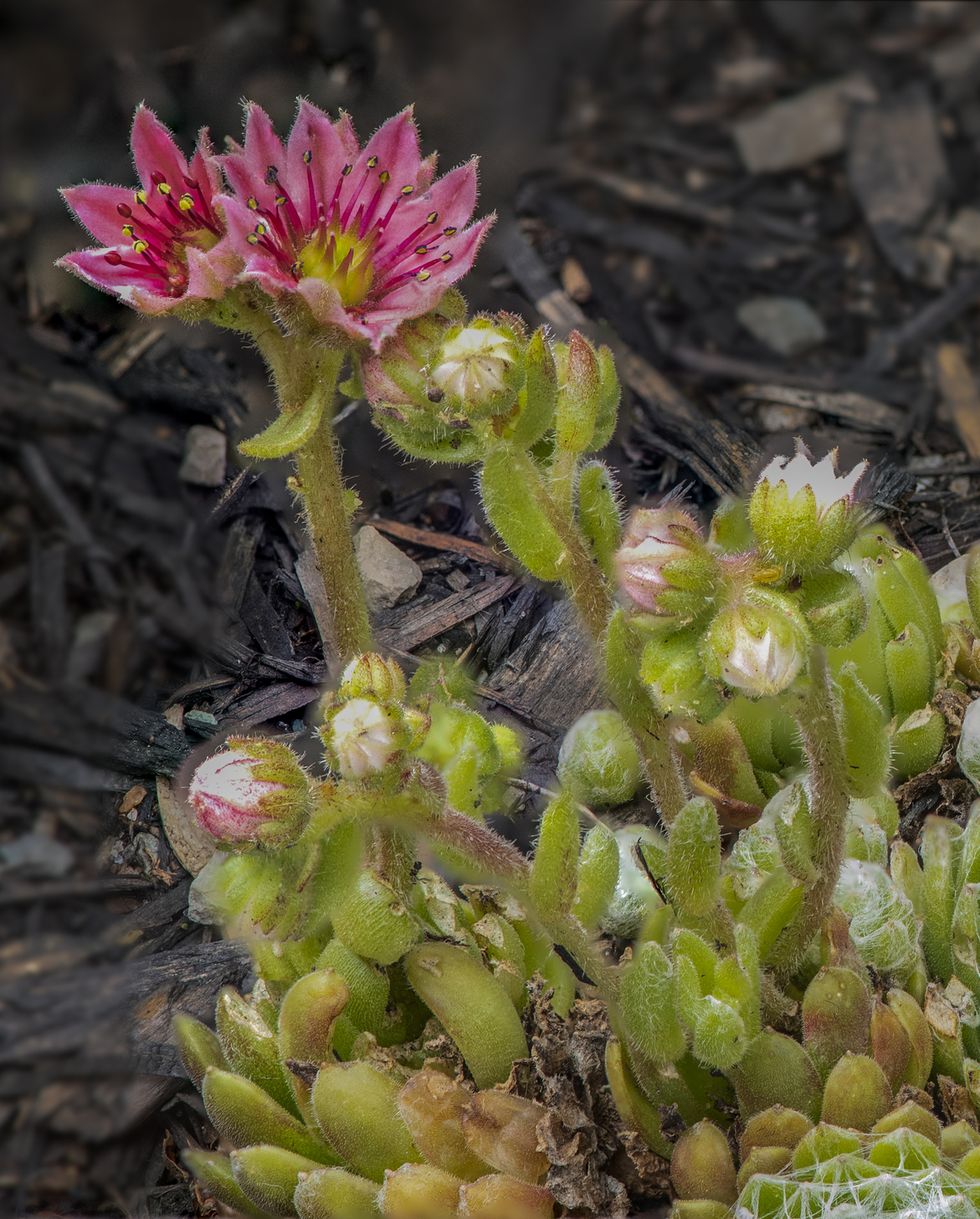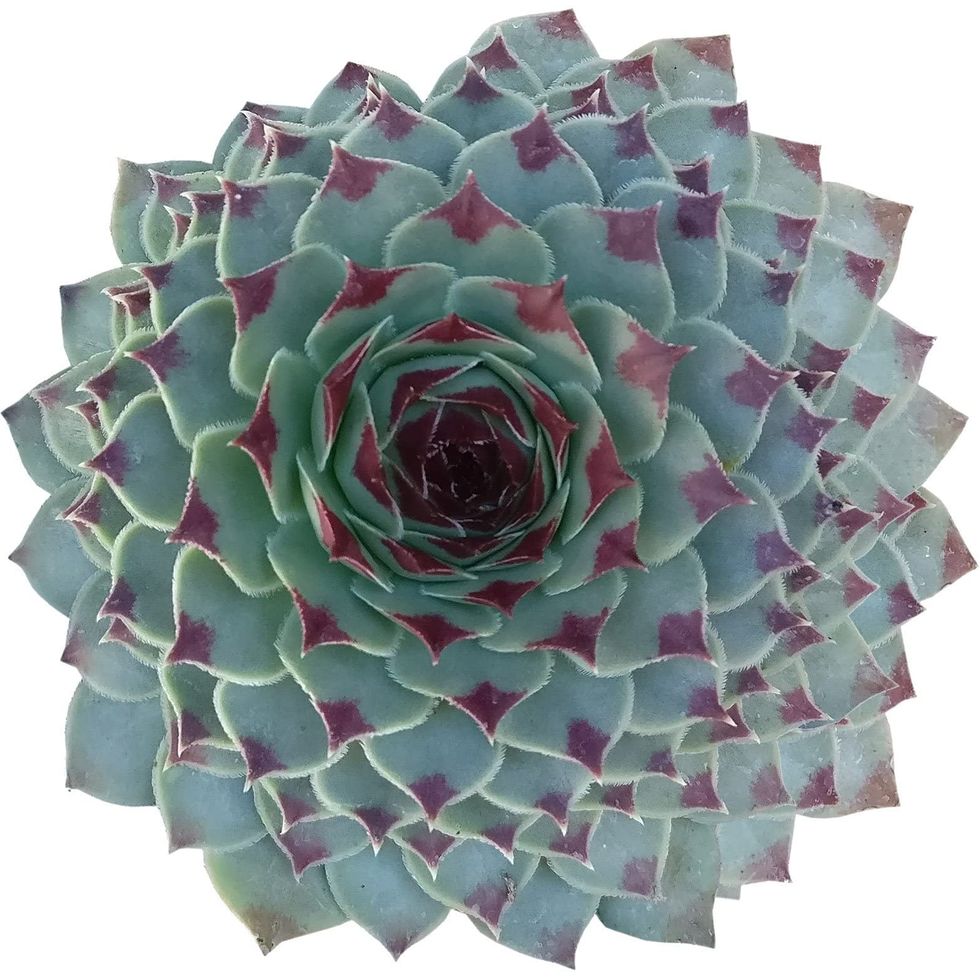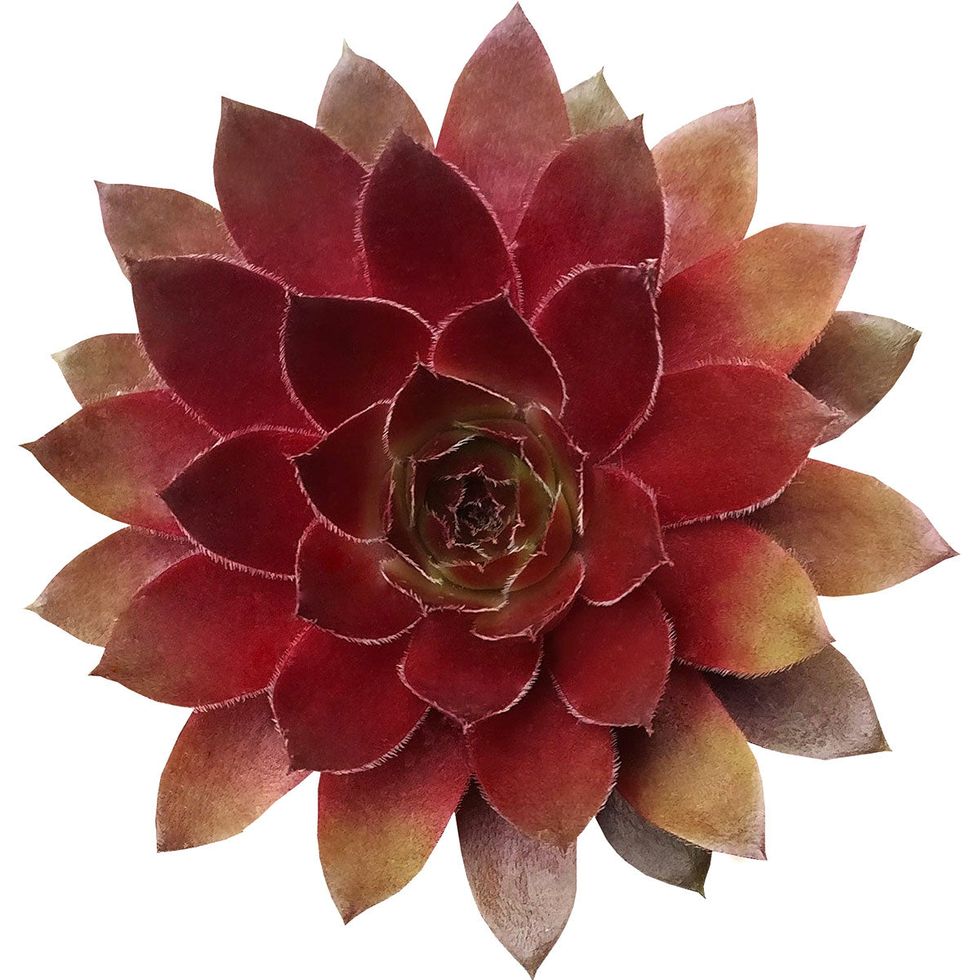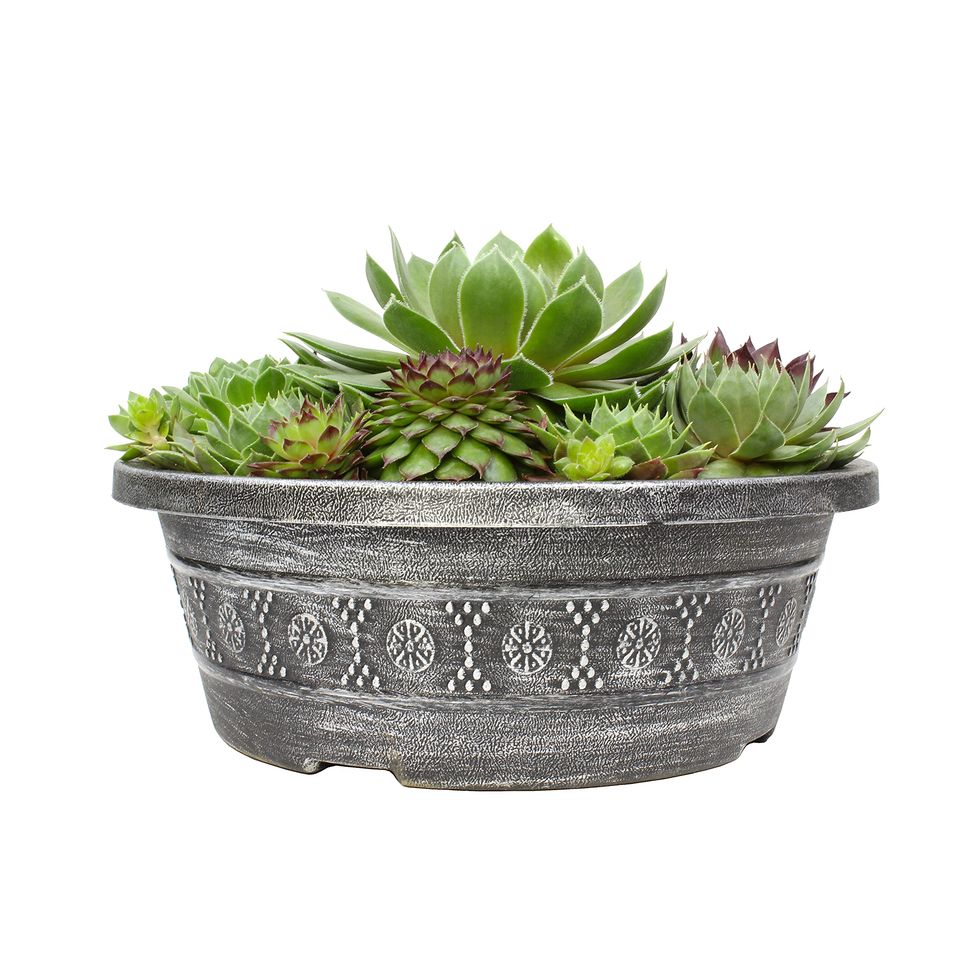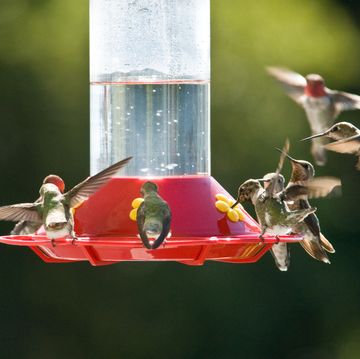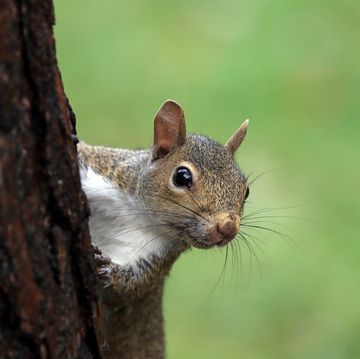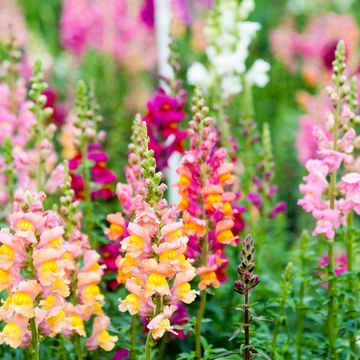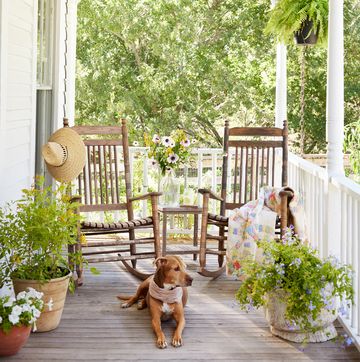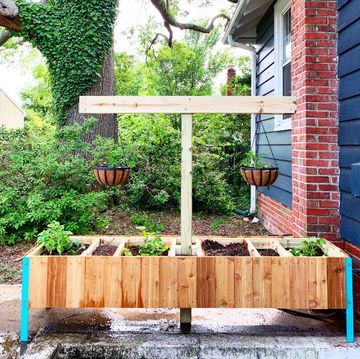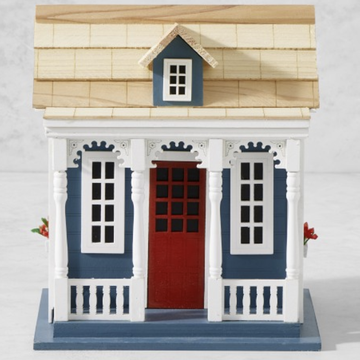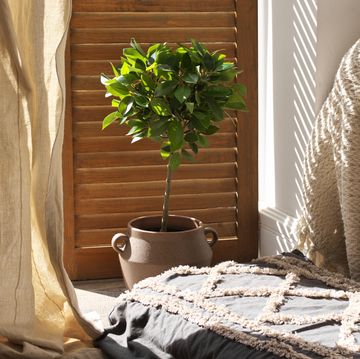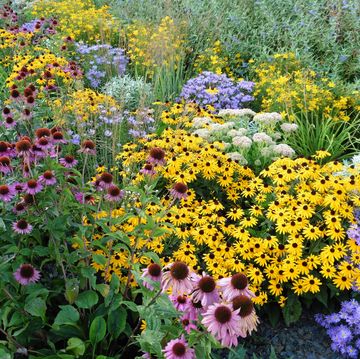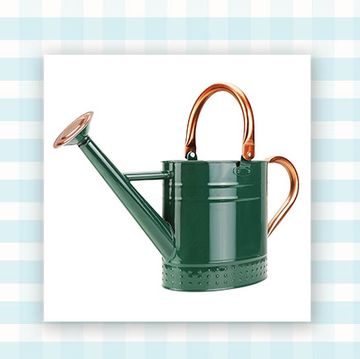Jump to:
- Why Trust Us?
- What are Hens and Chicks?
- Hens and Chicks Basic Info:
- Why Is the Plant Called Hens and Chicks?
- How Do You Care for Hens and Chicks Plant?
- Do Hens and Chicks Flower?
- How Do You Propagate Hens and Chicks?
- What’s the Difference Between Sempervivum and Echeveria?
- Are Hens and Chicks Plants Toxic to Pets?
Long before Millennial gardeners made flowering succulents so hugely popular, hens and chicks were a favorite garden plant. Your grandma may have grown them in her garden. They've been so long-loved because they’ve reliable and easy to grow.
These succulents are hardy, with a handsome texture and understated beauty. And once established, hens and chicks barely need any care. In fact, these are some of easiest perennials to grow in your garden, even if you’re totally new to gardening.
Why Trust Us?
I'm a garden writer with more than 15 years of experience growing houseplants, edibles, and landscape plantings. Hens and chicks are of the first pass-along plants I ever grew as a kid, shared from my Grandma’s garden.
I also regularly trial new plant cultivars for performance and reliability, and test garden products to evaluate practicality and durability.
What are Hens and Chicks?
Hens and chicks (Sempervivum spp) are plants that are native to the mountains of southern Europe. There are hundreds of species, but they all form a tight rosette close to the ground, never topping out at more than about 6 inches tall. Their thick leaves may be slightly tinged with pink or red.
Depending on the variety, hens and chicks grow just about everywhere in USDA Hardiness Zones 3 to 9 — covering most of the continental U.S. (Find your zone here.)
Fun fact: Their botanical name comes from the Latin for “to live forever,” which is pretty much true or this plant. Its long-lived nature is due to the numerous offsets, called “chicks,” which are produced from the mother plant. These baby plants form new colonies that spread rapidly.
Read more: How to Tell A Thanksgiving and Christmas Cactus Apart
Here’s what else you need to know about how to grow hens and chicks:
Hens and Chicks Basic Info:
- Common Name: Hens and Chicks
- Botanical Name: Sempervivum spp
- Plant Family: Crassulaceae
- Type of Plant: Perennial
- Native Origin: Southern Europe
- Sun Exposure: Full sun
- Preferred Soil Type/pH Range: Well draining/ Slightly acidic to neutral (6 to 8)
- Mature Size: 6 inches tall by 6 inches wide
- Hardiness Zones: 3 to 9
- Toxic to pets: No
Why Is the Plant Called Hens and Chicks?
The adorable name comes from the fact that the mother plant (the “hen,”) quickly produces baby offsets, called “chicks.” These plants are monocarpic, meaning once the mother plant blooms, it dies back and can be removed from the garden. The chicks will grow, then form their own chicks. This is how it can quickly spread.
How Do You Care for Hens and Chicks Plant?
Plant hens and chicks in full sun (at least 6 or more hours of direct sunlight per day). Hens and chicks like well-draining soils and don’t mind sandy, gritty, or poor soils. The plant is drought-tolerant once established.
This plant looks beautiful in rock gardens, along borders, or tucked into rock crevices. It also does well in shallow containers. In fact, a container (with a drainage hole) is ideal for these plants if you have heavy clay soil or live in a rainy climate.
That’s because, like all succulents, hens and chicks don’t like to stay wet. Soggy soil causes them to rot and turn to mush, so let them dry out in between waterings if in a container.
Do Hens and Chicks Flower?
When the mother plant is a few years old, it will push out a tall, thick stalk about 8 inches tall with a star-shaped flower on the end. The flower will last a few weeks, then the mother plant will die back. The baby plants, or chicks, will continue to grow.
How Do You Propagate Hens and Chicks?
Want to share hens and chicks with friends and neighbors? You can leave the babies in place to grow, or to make a new plant, simply twist off the baby from the main plant.
Place the chick in a container or in-ground, and mist with water daily for about 1 to 3 weeks (or less frequently if it's been raining or the soil stays wet) until the plant is established.
What’s the Difference Between Sempervivum and Echeveria?
Both of these plants go by the common name of “hens and chicks,” so they’re often confused. It’s easy to see why; echeveria looks very similar to sempervivum with a tight rosette shape. However sempervivum has narrow, pointy leaves, while echeveria has spoon-like leaves.
But the most important difference? Echeveria is only hardy to USDA zones 9 to 11 (covering central and south Florida, and parts of south Texas), so it’s usually grown as a houseplant.
If you try to grow echeveria outdoors in cold climates, it won’t survive the winter. On the other hand, sempervivum is cold-hardy to USDA zones 3 to 9.
Are Hens and Chicks Plants Toxic to Pets?
According to ASPCA, these plants are not toxic to pets. But remember that any plant can cause GI upset if eaten in large enough quantities, so keep your pet away from these plants if you know you have a nibbler.
Arricca Elin SanSone has written about health and lifestyle topics for Prevention, Country Living, Woman's Day, and more. She’s passionate about gardening, baking, reading, and spending time with the people and dogs she loves.
